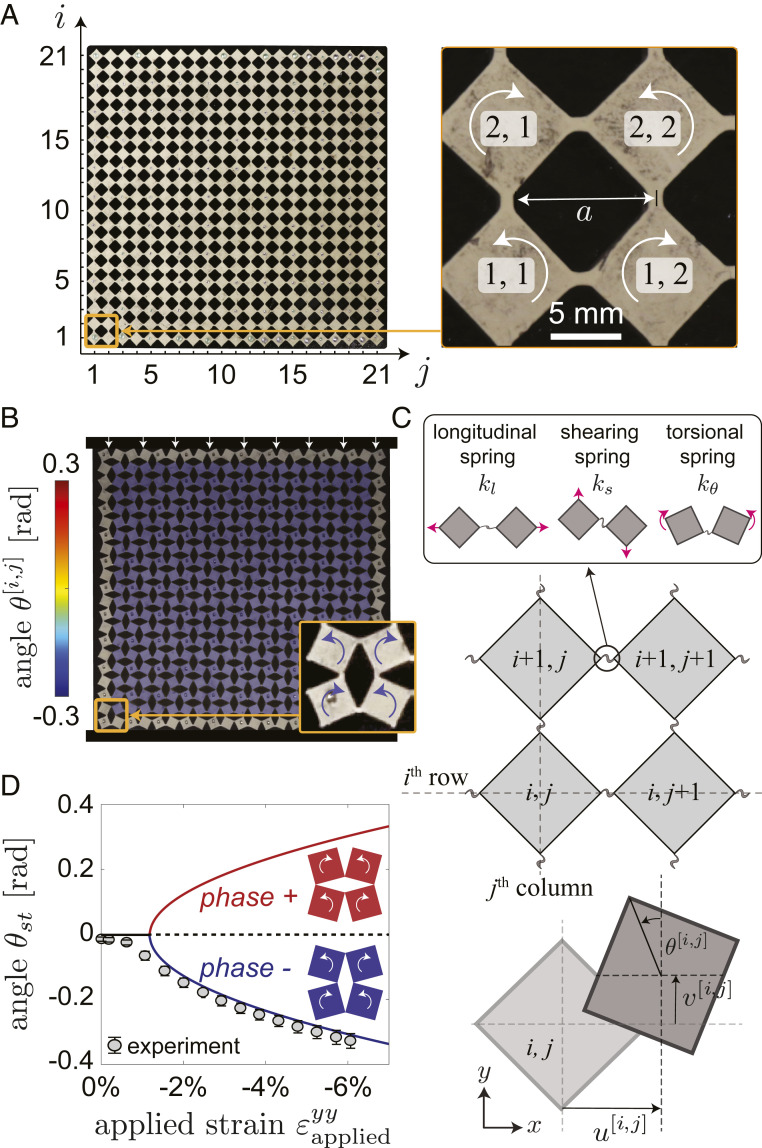Fig. 1.
(A) The system consists of a network of 2121 square domains connected by thin ligaments. The positive direction of rotation alternates for neighboring squares: A counterclockwise rotation of the [i, j]th square (the square located on the ith row and jth column) is defined positive if is an even number and negative if is odd. (B) Deformation of the sample when subjected to . The color indicates the rotation of the squares. (C) We model the system as an array of rigid squares connected at their vertices by elastic springs. (D) Evolution of as a function of as predicted by Eq. 5 (solid lines) and measured in our experiment (circles).

